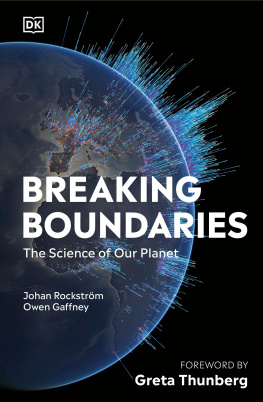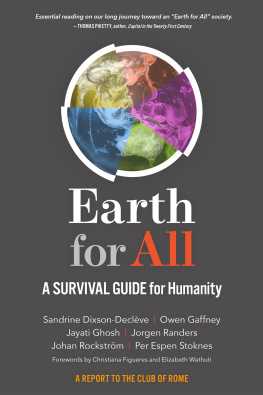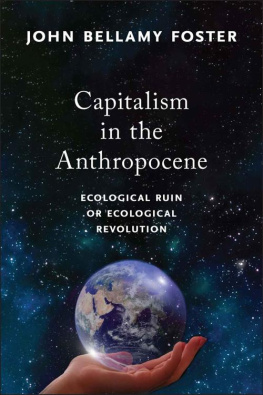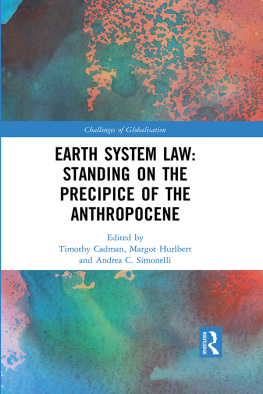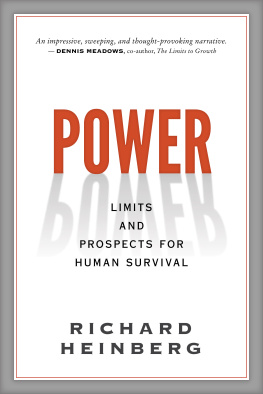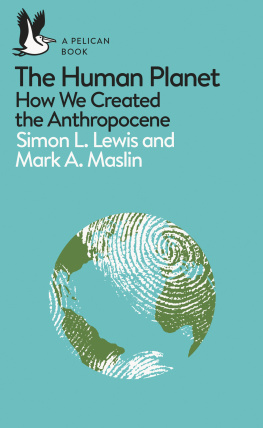
BIG WORLD SMALL PLANET
ABUNDANCE WITHIN PLANETARY BOUNDARIES
JOHAN ROCKSTRM AND MATTIAS KLUM
WITH PETER MILLER
MAX STRM PUBLISHING
BIG WORLD SMALL PLANET
ABUNDANCE WITHIN PLANETARY BOUNDARIES
JOHAN ROCKSTRM AND MATTIAS KLUM
WITH PETER MILLER

Big World Small Planet
Bokfrlaget Max Strm 2015
Text Johan Rockstrm
Text pages 114115 and photo captions Mattias Klum
All photos Mattias Klum,
except photo page 3 NASA/William Anders,
and page 51 (top left, polar bear) Johan Rockstrm
Editor Peter Miller
Illustrations/Graphs Jerker Lokrantz, Azote
Design Patric Leo
Layout Patric Leo, Petra Ahston Inkapl
Prepress Monika Klum, Fredrika Stelander and Graphicom
Printed on FSC paper by Graphicom, Italy 2015
ISBN 978-91-7126-334-6
www.maxstrom.se
CONTENTS
PREFACE
A PARTNERSHIP FOR CHANGE
IT WAS A BITTERLY cold night in Copenhagen. The big climate summit of 2009 was over and everyone was heading home. At the cavernous Bella Center, where delegates from 192 countries had spent two weeks in contentious negotiations, no one remained but an army of workers rolling up power cords and taking down hardware. The tens of thousands of protestors who had filled the city streets were long gone, along with the police helicopters that had hovered overhead. President Obama and the Americans were gone. Premier Wen Jinbao and the Chinese were gone. The diplomats, journalists, and activists who had come here to witness policymaking history were gone, andwithout anything resembling success to point tomost had departed with the same word on their lips: failure.
What went wrong? Mattias asked as we stood outside the Bella Center. The people I talked to had such high hopes.
Just a few days before, at an exhibition of his photographs, Mattias had given a short presentation to a high-powered group about the global effects of logging in Borneo. Tony Blair, former prime minister of the UK, had been there, as had HRH Crown Princess Victoria of Sweden, and Gro Harlem Brundtland, Special Envoy on Climate Change for the United Nations (UN). Having visited Borneo many times during his nearly three decades as a wildlife photographer and filmmaker, Mattias had spoken from the heart when he described the rampant destruction that has claimed 75 percent of the islands lowland rainforest, threatening both the reclusive Penan tribe and wildlife such as orangutans and pygmy elephants.
Everybody seemed to get it, Mattias said.
I had a similar experience that same week, when I took part in a European Union (EU)-sponsored side event on climate change. As panelists, we were asked to offer scenarios for stabilizing global temperatures at no more than 2C (3.6F) above pre-industrial levelsthe target being widely proposed at the conference. I had remarked to the group that a climate deal aloneas difficult as it might be to achievemight not be enough to meet a 2C goal, since the worlds climate was intertwined with other urgent problems such as biodiversity loss and ocean acidification. But other speakers were less cautious, expressing confidence that the goal was still reachable with existing technologies. The general mood was quite positive.
Im not really sure what happened, I replied. But I think two factors still haunt us. One is a deep distrust between rich and poor. And the other is that were still blind, despite all the science, to the fact that wealth in the world depends on the health of our planet.
The Copenhagen summit was supposed to be the culmination of a long journey. As the fifteenth session of the UN body charged with carrying out the 1992 climate treaty forged in Rio, and the fifth session of the governing body responsible for the 1997 Kyoto Protocol, it was supposed to be the meeting where the world finally came together to sign a new legally binding agreement on climate change. The Kyoto Protocol was set to expire in 2012.
In anticipation of the Copenhagen meeting, the prestigious scientific journal Nature had published an article in its September issue that Id co-authored with nearly two dozen international researchers. In the article, entitled A Safe Operating Space for Humanity, we proposed to track planetary boundaries for critical natural systems such as the global climate, stratospheric ozone, biodiversity, and ocean acidification. If humanity wanted to avoid triggering potentially disastrous tipping points, such as the melting of polar ice sheets, extreme storms, or mass extinctions of wildlife, we argued, then the world needed to know where the boundaries for such thresholds were located, which meant measuring them and tracking them. More positively, we wrote, by identifying these boundaries, humanity could chart a safe path into the future for generations to come, opening the door for greater prosperity, justice, and technological advancement.
What we presented, based on the latest science, was evidence that the world needs a new paradigm for development, one that pursues alleviation of poverty and economic growth while staying within the safe planetary boundaries that define a stable and resilient planet.
The editors of Nature called our proposal a grand intellectual challenge, saying that it could provide badly needed information for policymakers, which was exactly what we were hoping for, of course. As expected, the paper stimulated a lot of debate, including criticism of our methods and assumptions. This was science, after all, which lives and breathes skepticism and disagreement. We wanted to challenge our scientific peers.
But new research and scientific debates since publication of the paper have verified the need for planetary boundary thinking. The most recent science confirms that as long as we manage, within safe boundaries, our planets key systemsthe climate system, the stratospheric ozone layer, ocean acidification, the remaining forests on Earth, and secure enough freshwater in our rivers and landscapes, safeguard biodiversity, and avoid air pollution and release of chemical compoundswe stand a good chance to secure a prosperous future for the world for many generations to come.
But that was the scientific side of the coin. We also aimed our proposal at a broader audience, including business leaders and political leaderslike those meeting in Copenhagen. We wanted to give the world a new framework to redefine global development by reconnecting economies and societies to the planet. In so doing, we wanted to create a tool providing a practical and comprehensive way to measure human impacts on Earth, and guide our common endeavor toward a sustainable world development, before it was too late.
It soon became obvious, however, that the time hadnt come yet for such ambitious goals. Despite all the promising talk, world leaders failed miserably in Copenhagen to agree on targets to stay within a safe global budget for carbon in the atmosphere, one of the nine planetary boundaries, by reducing greenhouse gas emissions. Negotiating sessions unraveled as groups of delegates walked out. Unofficial meetings sprang up right and left. When President Obama and the leaders of four other nations announced on the last day that theyd privately reached an accord, the rest of the conference felt excluded. The media called the summit disappointing and a missed opportunity. Andreas Carlgren, Swedens Environment Minister, went further, describing the talks as a disaster and a great failure. Outside the Bella Center, protestors cut off their hair in frustration. The city of Copenhagen is a crime scene tonight, with the guilty men and women fleeing to the airport, reported John Sauven, executive director of Greenpeace UK.
Next page

